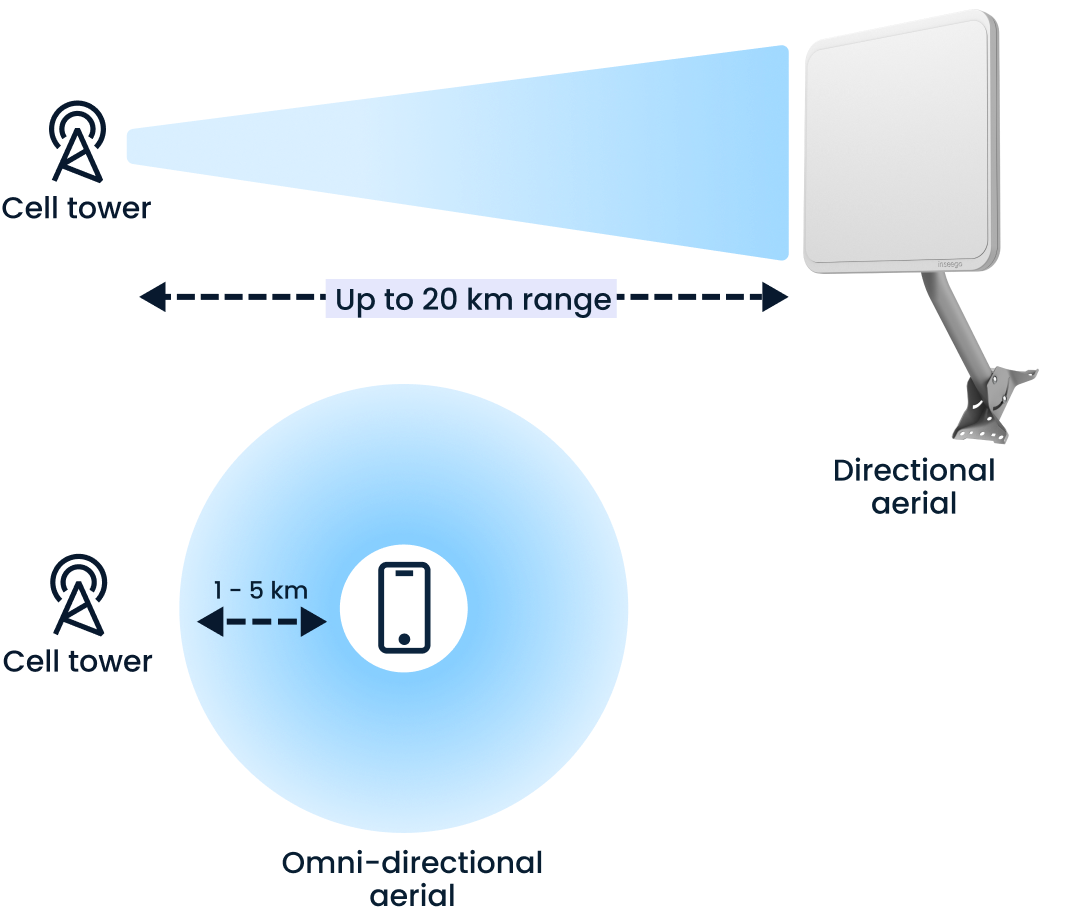Also in this category
View more in Connectivity for Remote NetworksConnectivity for Remote Networks
How do 5G and edge computing work together?

5G and edge computing are pivotal technologies in the current digital era, known for revolutionizing connectivity and data processing. Independently, each technology offers remarkable advancements: 5G provides unprecedented speed and low latency for data transmission, while edge computing brings processing power closer to data sources, enhancing efficiency and reducing latency.
By combining these technologies, enterprises can unlock opportunities for innovation and growth.
5G offers greater speed and bandwidth, lower latency
5G is the fifth generation of mobile network technology, and it promises faster data speeds, higher bandwidth, and low latency — with response times of 1 millisecond or less. 5G networks are also capable of handling more connected devices than ever before, making them ideal for the Internet of Things (IoT).
The advantages 5G networks have over previous generations of mobile network technology make it ideal for applications such as video streaming, gaming, and augmented and virtual reality. 5G networks also provide the potential for more reliable and secure connections, as well as the ability to provide ultra-low latency for real-time applications.
Learn more about 5GEdge computing reduces latency and improves response times
Edge computing is a distributed computing model in which data processing and storage are moved away from the cloud and closer to the edges of the network — such as end-user devices, hubs, and private networks. This allows for faster response times and lower latency, and it also reduces the need for large-scale cloud computing resources.
By moving data processing closer to the source, it enables applications such as augmented and virtual reality, gaming, and real-time analytics. And by reducing the need for large-scale cloud computing resources, it provides savings in terms of both time and money.
Learn more about edge computingEnhanced digital transformation via 5G and edge computing
Combining 5G and edge computing provides the potential to revolutionize the way we use technology. 5G networks provide the faster speeds and higher bandwidth needed to support edge technologies, while edge computing reduces the need for large-scale cloud computing resources. This creates a powerful ecosystem of telecommunications, cloud, and edge technologies, enabling a digital transformation that can leverage new applications and services, such as artificial intelligence and machine learning.
Combined technologies support new use cases
By combining 5G and edge computing, enterprises gain the benefits of both in tandem. Faster speeds, higher bandwidth, low latency, and less need for large-scale cloud computing resources enable access to powerful new use cases, some of which are noted below.
Increased connectivity
5G and edge computing provide increased connectivity for businesses, allowing them to access faster, more reliable data speeds with less downtime. This increased connectivity can be used to power a variety of use cases, such as remote working, virtual reality, self-driving cars, and more. By leveraging 5G and edge computing, businesses can create more efficient and cost-effective systems that can improve customer experience and productivity.
Smart cities
Smart cities are becoming increasingly popular, and 5G and edge computing can play a critical role in powering these cities. By leveraging them both, cities can create smarter and more efficient infrastructure, such as smart grids, autonomous vehicles, and more. This increased connectivity and efficiency can help reduce energy consumption and improve the quality of life in the city.
Industrial automation
5G and edge computing can be used to automate processes such as manufacturing, monitoring, and maintenance. The increased efficiency provided by automation can help reduce costs and improve productivity, while also allowing for the implementation of new technologies, such as robotics and artificial intelligence, which can further enhance operational efficiency.
Healthcare
Advanced healthcare applications, such as real-time patient monitoring, medical imaging, and telemedicine, benefit greatly from the high-bandwidth, low-latency connectivity offered by 5G and edge computing. This increased connectivity can help improve patient care and access to healthcare services.
Retail
There are also a variety of retail applications, such as augmented reality and contactless payment, that rely on 5G’s greater bandwidth and speed, and edge computing’s real-time, low-latency capabilities. With these two technologies, retailers can improve the customer experience and leverage more efficient and cost-effective information and communication systems.
Complex network infrastructure is a combination challenge
The integration of these technologies requires sophisticated network infrastructure and adept management. This is where robust solutions like Inseego Connect come into play. By providing comprehensive cloud management over all Inseego routers, cellular antennas, and MiFi devices in your network, Inseego Connect empowers enterprises to efficiently manage and optimize their 5G and edge computing environments.
Explore how Inseego Connect can streamline your digital transformation efforts by visiting our cloud management page.
Learn more about Inseego ConnectIs your current internet connection meeting your business needs?
Even though your current connection is meeting your needs 5G cellular is also an affordable way to provide a back-up internet connection if your primary connection goes down.
Inseego outdoor antennas can support dual SIM cards for multi-carrier failover and ultimate reliability.
How is your connection letting you down?
What is your current connection type?
Do you get cell signal at your business?
Who is your current network provider
We've got a solution
A 5G cellular connection is a great way provide extra resilience to you business. This means if your primary connection goes down, any part of your business that relies on connectivity can carry on uninterrupted.
Even if you get a weak or almost no signal from your mobile phone, you can still get a great connection thanks to the powerful, directional antenna inside the FW2000.
5G cellular plans are affordable, with internet options from $50 - $100 per month, from the leading network providers.
What are your details?
How can we contact you?
Thanks, we've got your request
We’re excited to share our 5G connectivity solutions with you.
Check your email now for a confirmation message. Then a member of our team will send a personalised message within 1 business day to arrange a suitable time to have an in-depth one on one consultation.

5G Outdoor FW2000



Did you know?


5G Outdoor FW2000


Did you know?
Our hugely experienced team are located across the USA.
We’ll connect you with the Inseego team member nearest to you.
What happens next?
We aim to contact you via email within 1 business day to arrange a suitable to time for a detailed discussion of your needs.











